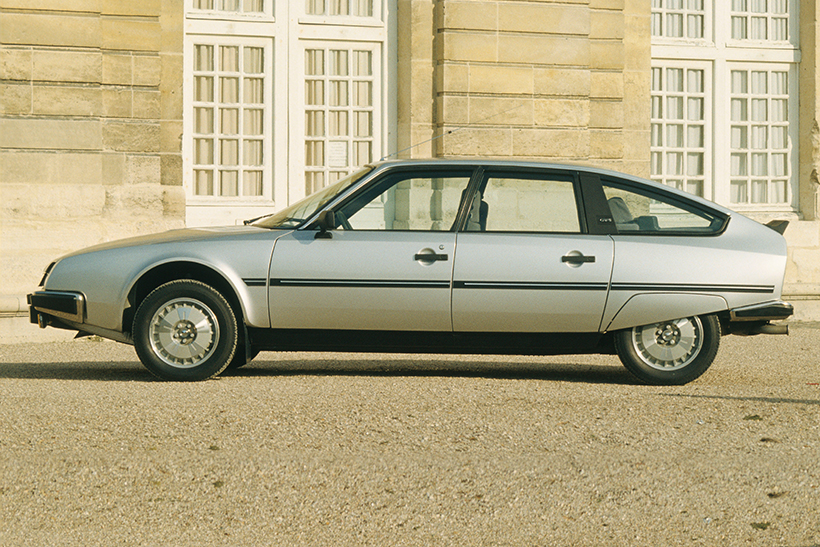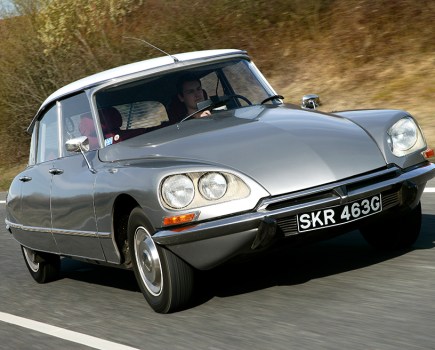Estate cars don’t come bigger than this. Or more practical for that matter, the CX’s traditional Citroën hydropneumatic suspension offering a self-levelling facility which gave it the carrying capacity of a long-wheelbase Transit.
The CX was introduced as a replacement for the ID/DS range which had been the firm’s big saloon since the ’50s and it was the last car to be designed by an independent Citroën before its precarious financial situation forced owner Michelin to sell to PSA.
The car was futuristic to say the last, the name ‘CX’ stemming from the French acronym for drag coefficient and Robert Opron’s sleek lines looing like nothing else on the road — well, apart from its smaller brother the GS of course.
The wedgy shape clothed a development of Citroën’s familiar hydraulic suspension although the swivelling headlamps from the DS didn’t make a repeat appearance and as a result the CX had a ride like no other car on the road.
It came from a time when Citroën’s finances were at their most precarious though and the funds to develop similarly modern running gear weren’t available, meaning that the CX had to soldier on with a range of ancient engines inherited from the DS… which in turn had their roots in the ’30s Traction Avant powerplants.
The old pushrod four-pot motors weren’t the smoothest around although they were torquey and reliable, but ironically the car had originally been designed with a rotary engine in mind, thanks to the Citroën/Wankel Comotor project. Citroën briefly produced a limited run of rotary-engined GS’s under the name Birotor but reliability problems saw the project cancelled before the CX was signed off.
Over time the engines were beefed up to a point where they belied their age, with first fuel injection and then turbocharging boosting their power to the point where the 166 bhp blown and intercooled Turbo 2 was a seriously capable performance car. Meanwhile, the diesel engines gave the CX an additional dose of practicality.
The estate was built on a longer wheelbase than the saloon and was offered in two formats: the Safari an the seven-seat Familiale.
It wasn’t all about practicality though: the CX was idiosyncratic Citroën through and through, from the radio nestled vertically between the seats to the ‘satellite’ control pods and the crazy roof-mounted electric window switches. And if you’ve ever worked on one, you’ll know all about the wiring system in which all the wires are the same shade with only coloured collars to identify them. Oh and that the 140 mph Turbo still features a cardboard tube as part of the factory-fitted induction system.
The CX was ultimately replaced in 1989 by the anonymously styled XM but the estates lived on until 1991, the market lacking anything – well, anything with windows at least – offering matching cargo capacity.






